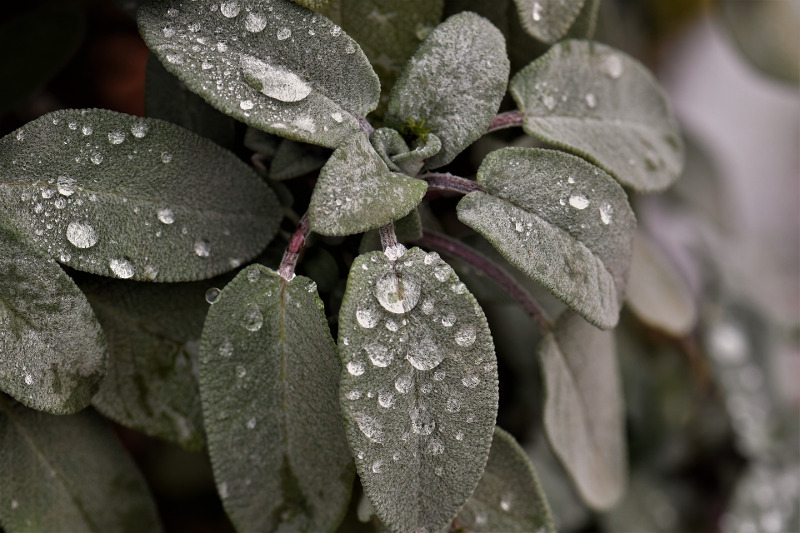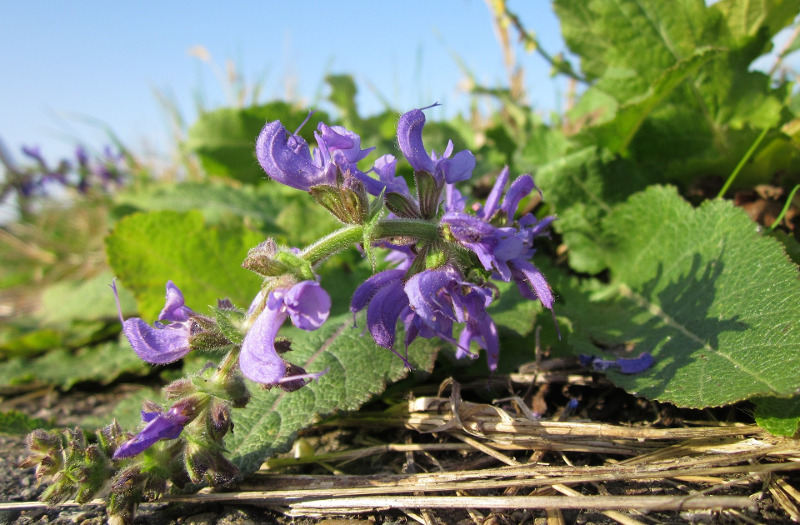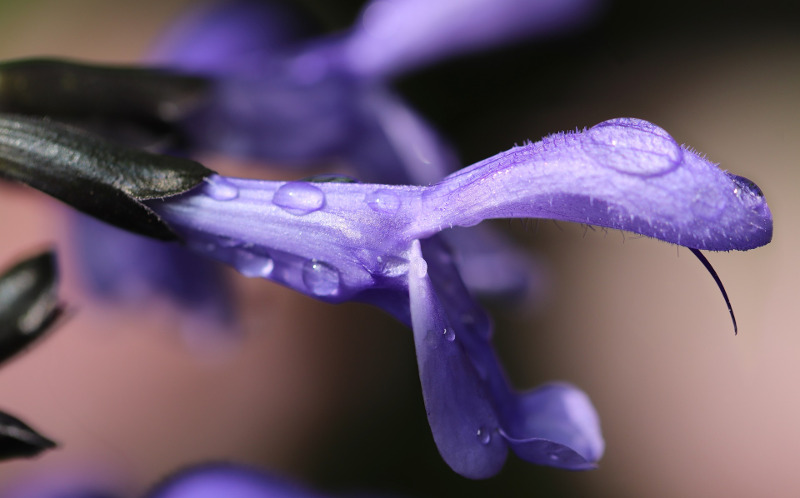Adding salvia plants to your landscape will be one of the best decisions you make! Once established, salvia plants will be quite drought resistant and versatile within their environment.
Imagine being away from your garden for an extended amount of time and coming back to find your salvia barren or nearly barren due to lack of precipitation and watering. Initially you may find yourself saddened to see a once flourishing, but now nearly-dead looking salvia. Don’t fret! This is your salvia’s built in water-retention process. When a salvia is without water for an extended period of time, it may lose all or most of its leaves. Sometimes, tiny leaves will be at the very tip of its stems. These tiny leaves are powerhouses in chlorophyll production – without needing excessive moisture.
If your salvia has experienced a severe lack of water, watering well as soon as possible will encourage the flourishing foliage you desire. They’re truly wonderful plants for those that don’t have a natural green thumb!

How To Tell If Salvia Needs Watered
Although salvia plants possess the incredible ability to keep themselves surviving in less than ideal watering situations, they still love consistent watering! So how can you tell if your salvia needs a drink?
Observing the leaves and foliage is one of the best ways to identify your salvia’s watering needs. Look for shriveled leaves or flexible and leaning stems. Worse case scenario, your salvia may shed all or most of its leaves to reduce its watering needs until it receives the needed water to thrive.
Is the soil crumbly or cracking? The soil should be moist when you poke a finger about 1” below the surface.

How Often To Water Salvia
When first establishing your salvia to its new home, thoroughly water the soil at the base of the plant until the soil has absorbed enough water without becoming submerged.
Salvia plants are a blessing to have within your landscape as they possess the ability to be incredibly drought tolerant. So when do you need to water them? If your area has experienced a severe drought, you may see signs of foliage distress. Read above to determine the signs of foliage distress so you can determine whether or not your salvia needs a thirst quench.
Salvia can be susceptible to diseases brought on from overwatering. Ensure that your salvia has a home where excessive rainfall will not pool around the roots and foliage of it. It is advised to rehome your plant to a new, ideal location if excessive flooding is a concern at times.
But wait, what if you have a potted salvia? How often should you water it? The same concept of monitoring the soil and foliage applies to potted salvias, with a bit more consideration. Potted plants in general can be susceptible to drier conditions due to heat radiating around the outside of the pot from direct sunlight or from a warm surface on which the pot sits upon.
One of the first signs you may observe is dry and cracking soil. It is recommended to check your salvia once per week or so and thoroughly water it when the soil is crumbly or cracking. If you’re not checking the soil, you may see your salvia wilt its leaves and eventually shed all or most of them. Observation is key!

Best Time To Water Salvia
Because salvia plants tend to be susceptible to disease originating from overwatering, it is advised to water them in the morning or afternoon hours. This allows any water on the leaves a chance to dry before the sun sets, thus reducing the possibility of diseases.
Come wintertime, watering needs will slow down considerably, if not completely, if your salvia is receiving rainfall. Evergreen varieties will still need to be observed for signs of under-watering as they are still using water for retaining their foliage.
Due to their drought tolerance, salvia will last a long time without consistent watering. However, that doesn’t mean that the foliage will be as you desire. Using the above observations will allow you to gauge when and if you need to water your salvia.
When potted and indoors, salvia plants rely solely on you to water them. Check the soil first for dry and cracking soil. If you happen to ignore the soil observations, you may see wilted or a shedding of leaves. Your salvia will be okay and will once again flourish with some love and a large drink of water!
How to Water Salvia
Step 1 - Check the soil and foliage. Observe the root base for crumbly or cracked soil or wilted leaves.
Step 2 - Add water to the base of the plant. Salvia foliage can be susceptible to diseases from the soil.
Step 3 - Water in the morning or afternoon. Reduce the chance of disease transmission by allowing the water to absorb and evaporate before the sun sets.
Step 4 - Water thoroughly. Without submerging the roots, add enough water for the soil to absorb.
Step 5 - Continue observing for watering needs. Monitor your salvia for signs of foliage distress or dry, crumbly soil. Water as needed!
Salvia Watering Tips
- Observation is key to determining your salvia’s watering needs.
- Remember salvias are drought tolerant and will thrive again if neglected.
- Water at the base of the plant.
- Plan to water in the morning and afternoon hours to reduce disease transmission.
 |
Author Chris Link - Published 03-07-2022 |
